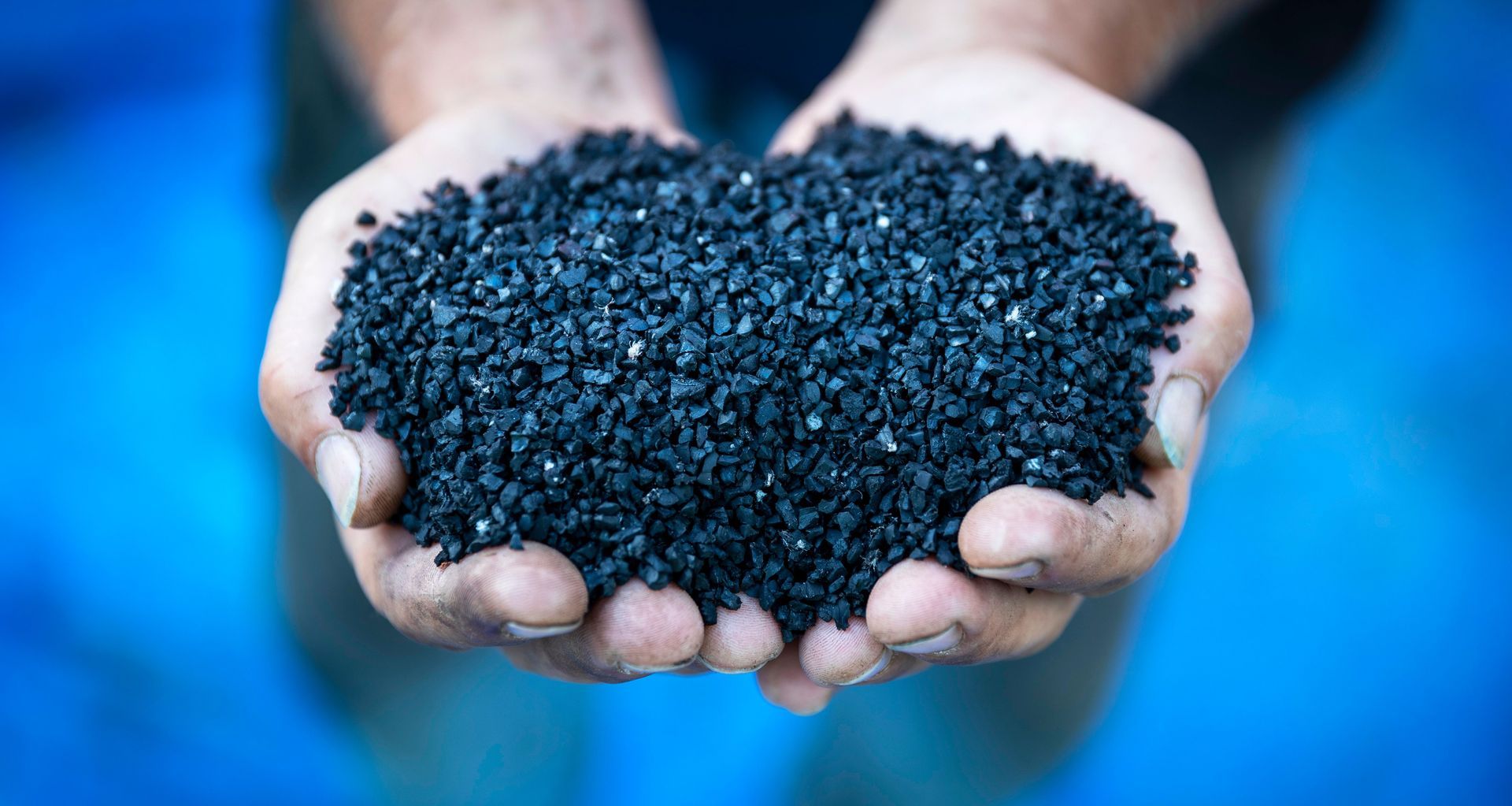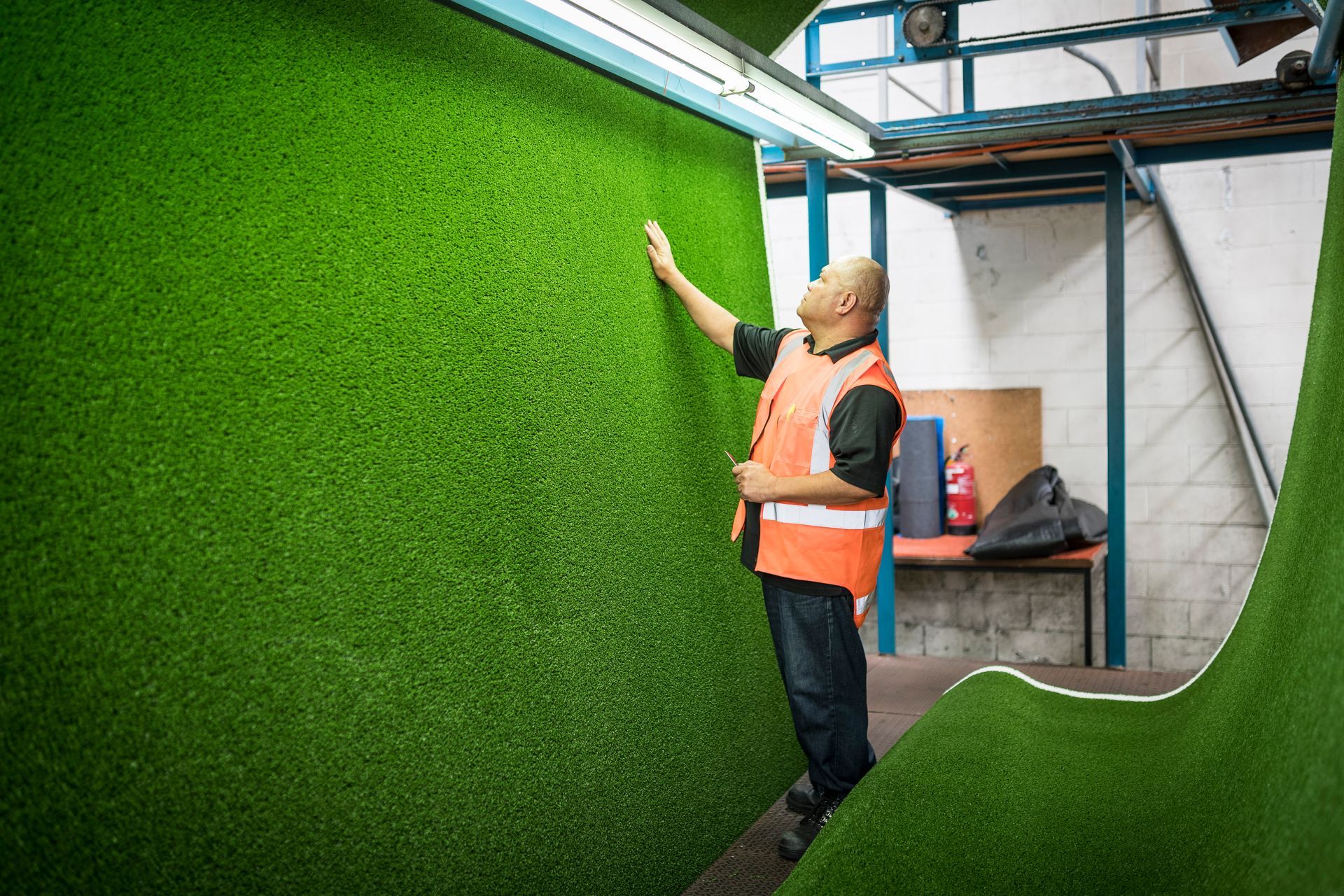Innovative technologies in synthetic turf: Examining the latest advancements and their impacts on performance and durability
Written by
11 July 2024
•
6 min read

In the last five years, the synthetic turf industry has seen a significant trend towards developing environmentally friendly technology. In Europe, mobile microplastics are in the process of being banned, meaning synthetic sports surface technologies have had to evolve accordingly. A focus on surfaces that perform at the highest level without harming the environment is key to innovations across the industry. To understand the technology now on offer, we spoke with TigerTurf’s Emily Honey-Kolacz who shares the latest innovations in synthetic turf technology, including turf drainage, fibre sourcing, temperature control and shock-absorbing technologies.
The environmental benefits of using synthetic turf
Synthetic turf plays an important role in community sport because it facilitates significantly higher usage rates than even the best-maintained natural field, without the need for any fertilisers or harmful pesticides, shares Honey-Kolacz.
“Both of these inputs can have a negative impact on the environment by polluting the air, water, and soil itself. In metropolitan areas, open space for sport is becoming scarcer, making it increasingly difficult for clubs to provide sufficient sporting facilities for the growing population, and an increase in women’s participation in sport.”
A synthetic field can manage up to 80 hours of usage per week, which is significantly higher than a maximum of 20-30 hours of a natural field with an extremely demanding maintenance regime. This means that synthetic fields can more than double a community’s sporting capacity using the same area of outdoor space, whilst avoiding the use of pollutants like pesticides, herbicides, and intensive fertiliser regimes, says Honey-Kolacz.
“Synthetic turf fields also have an important role to play in water-scarce communities by creating surfaces that, thanks to their shock-absorbing layers, don’t become unsafe in extended dry periods where natural fields can become extremely hard, and risk player injury.”

Innovative drainage systems mitigate water accumulation and improve playability
Traditional base construction techniques for sports turfs require the removal of significant amounts of topsoil, the introduction of stable free-draining material like aggregate all requiring significant amounts of truck and trailer movements, quarries for materials and machinery, the carbon footprint of which is substantial. Once the base is completed, a sports pad then needs to be added to provide the sport-specific cushioning and playing characteristics.
Ecocept* is a product developed by TigerTurf and its parent company TenCate Grass that uses diverted mixed plastic waste and end-of-life car tyres, processed, and combined in a way that reduces the amount of soil and aggregate needed in traditional sports field base. It also provides the ability to be tuned to the specific sport required. As an example, a 24mm thick ecocept pad on one football field of 8,000m2 = 75 tonnes of plastic waste and 70 tonnes of car tyres diverted from landfill, reducing the carbon footprint on a traditional artificial football field by 112.5 tonnes of CO2.
“Essentially, ecocept turns landfill into high-performance sports bases used under synthetic turf sports playing surfaces. It is designed to work with TigerTurf’s synthetic turf products, enhancing playing performance, improving drainage and replacing several traditional base construction techniques, reducing cost and environmental impact.”
For a single hockey field, this saves 40 tonnes of plastic and rubber waste going into landfill, while the equivalent ecocept base uses 5,000 recycled car tyres and eight million recycled plastic bags per standard pitch.
“In addition to being made of recycled materials, it also removes the need for an asphalt layer, which further reduces a field's associated or embodied carbon and energy, as asphalt sourcing and installation are energy and resource-heavy processes.”
Synthetic turf moves away from microplastics
With the banning of mobile microplastics underway in Europe, there are several different avenues available to reduce and/or remove microplastics from sports surfaces, some of which include the use of organic performance infills in place of rubber or plastic-based options. Taking this further, TenCate Grass has invested significantly in football turf that has no infill at all – neither sand (stabilising infill) or performance infill. This new surface is called Pure PT, and has been designed by TenCate Grass’ Centre for Turf Innovation, which is led by Dr Colin Young, the leading elite sports performance expert globally.
“We have pursued technologies like Pure PT because we are driven by creating high-performance sports surfaces that don’t compromise the environment. By removing infill from the surface entirely, the wear and tear on the turf is significantly reduced. This means the surface lasts longer than traditional 3G football systems.”
A focus on where the polymers that form the synthetic turf yarn are being sourced from has become key to achieving turf resilience and longevity. At TenCate Grass, yarns are produced with traceable and high-quality polymers that guarantee performance and durability.
“We partner closely with some of the largest polymer producers in the world to ensure our turf is produced from the highest quality raw materials,” shares Honey-Kolacz. “As technology has developed, so has yarn technology – we are constantly searching for new ways to increase durability, whilst balancing circularity.”

The latest turf temperature control and shock absorption
The dark colour of conventional synthetic turf absorbs infrared light which is transformed into heat, this is the same process that occurs on any dark surface like decks, dark paving, rubber matting or asphalt. Heat build-up can affect the integrity of the turf material, as well as affect the sports player’s ability.
In response to this issue, TigerTurf’s TigerCool artificial cooling technology uses heat-reflective colour pigments in the yarn manufacturing process which, when tufted into a synthetic turf, reflect infrared light causing a decrease in heat build-up.
“TigerCool is the latest in artificial turf cooling technology,” shares Honey-Kolacz, “created by TenCate, a worldwide innovator of space-age yarns for NASA and Boeing, TigerCool yarns are engineered with heat reflective colour pigments and advanced UV inhibitors that reduce surface temperature.”
Shock-absorbing technologies have also evolved to create a uniform, consistent, and reliable surface for athletes to play on that doesn’t change due to weather or climatic conditions.
“For high-impact sports like rugby and AFL, having the right shock-absorbing layer is extremely important in order to protect players against significant injury; using the right shock pad can also help reduce player fatigue, helping return energy to the players as they move across the pitch.”
Tigerturf’s synthetic turf technologies feature shock pads or elastic layers, which are a crucial element of elite performance surfaces, particularly in transitioning towards non-infill surfaces.
Going forward, Honey-Kolacz says sports performance and environmental impact will drive continual development in synthetic turf technologies.
“We’re grateful to be part of a team of companies that are at the forefront of these technologies with products like Pure EP, our waterless hockey turf, and ecocept, which diverts a significant amount of waste from landfill.”
Explore synthetic turf products from TigerTurf
*ecocept is a registered trademark of TigerTurf